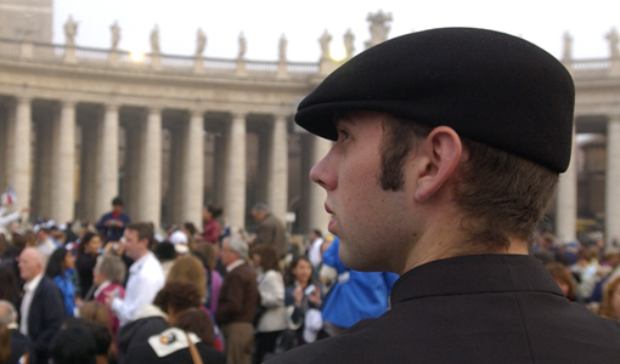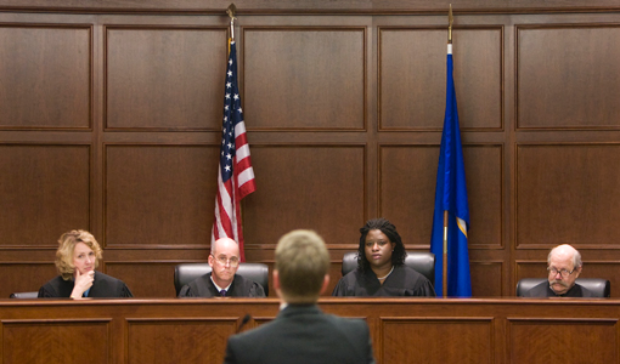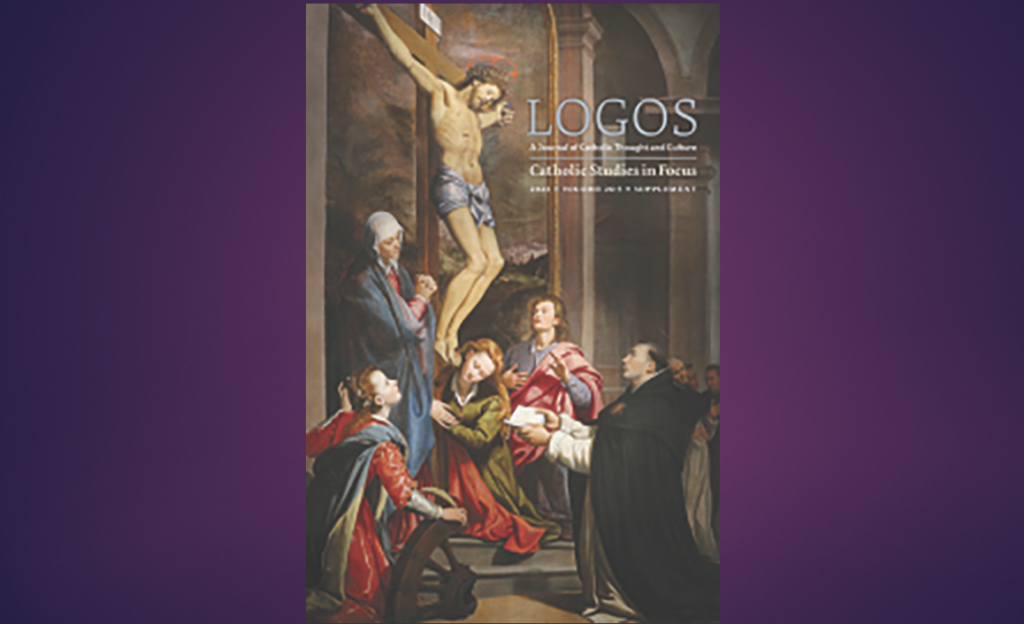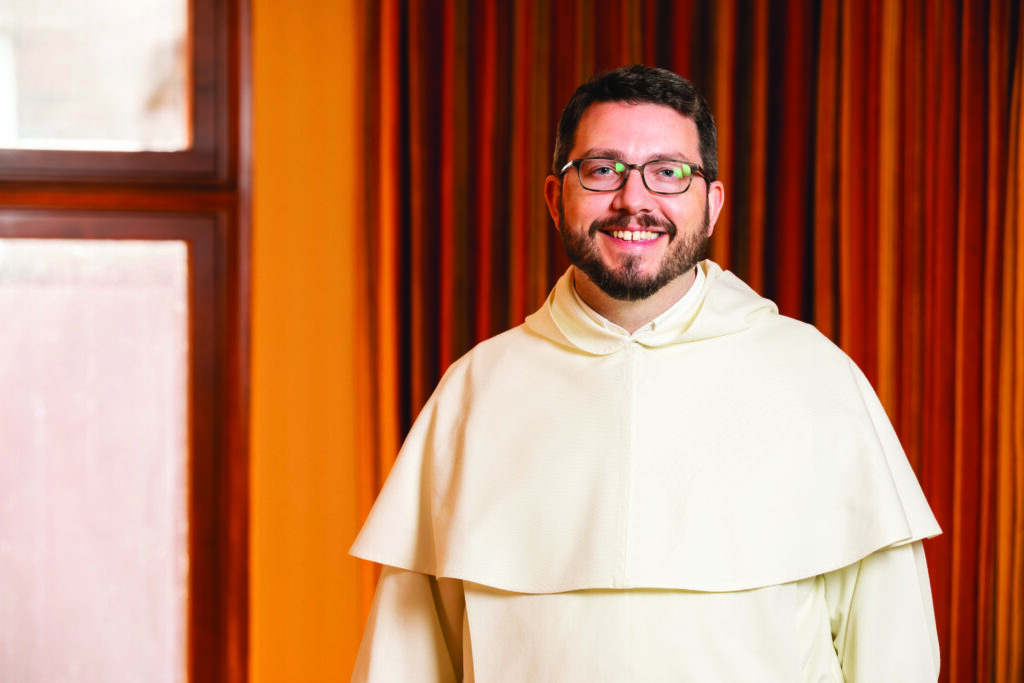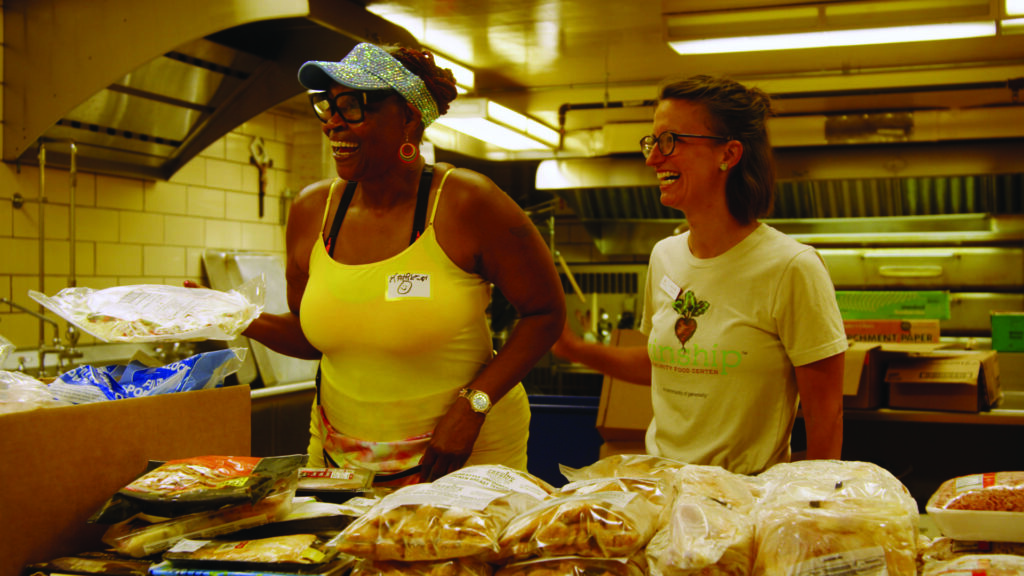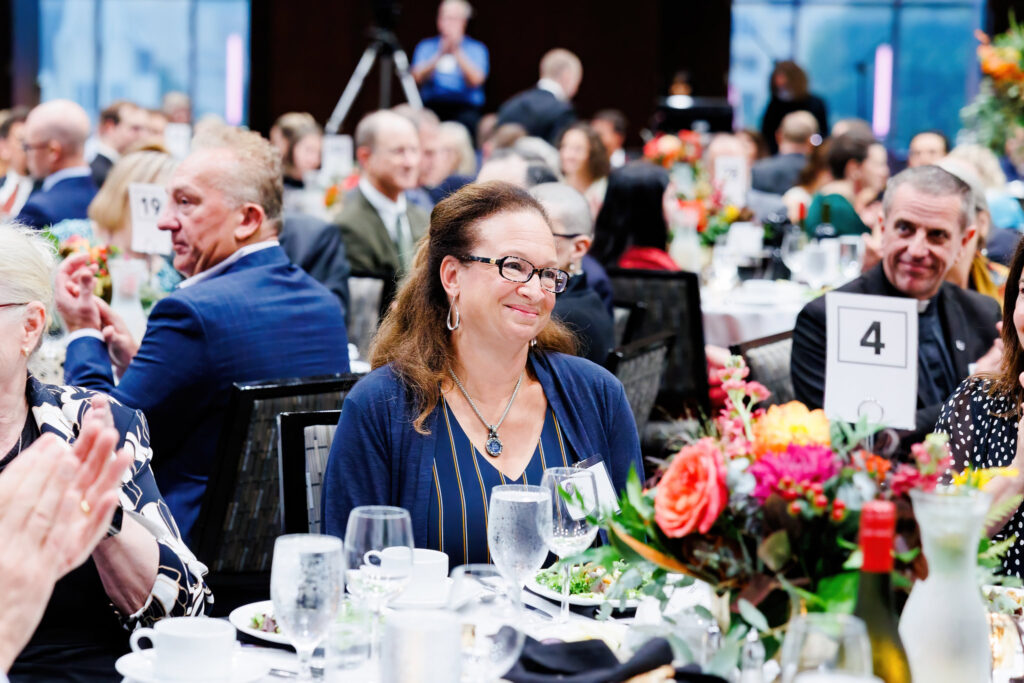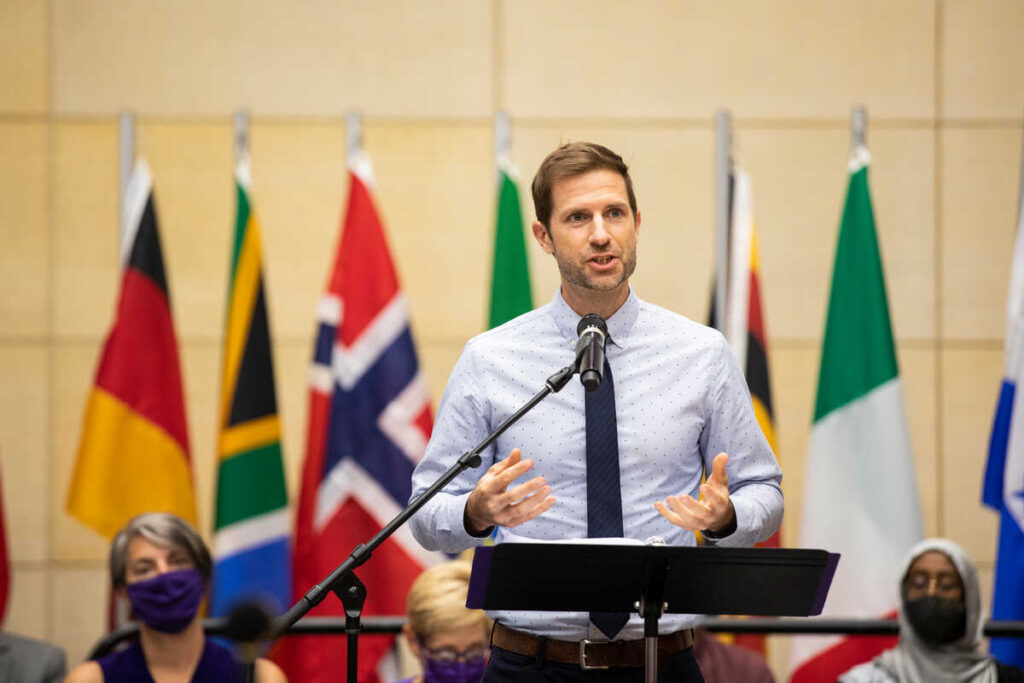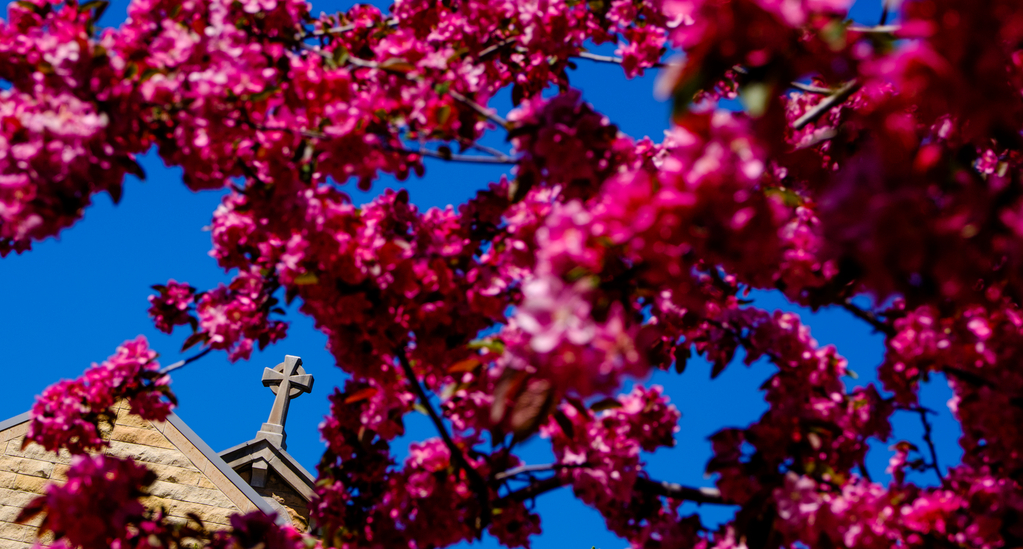Catholic Studies sponsors a study-abroad program in Rome. Last spring, the university purchased a residence in Rome’s Prati district, convenient to the Vatican and to the city center. This residence was recently dedicated as the Bernardi Campus of the University of St.Thomas in Rome. Catholic Studies students take courses at the Angelicum, the Pontifical Institute of St.Thomas in Rome. In the fall of 2000, 11 Catholic Studies students and faculty adviser Mary Reichardt, director of the Master of Arts in Catholic Studies Program, were in Rome.
As an interdisciplinary program, Catholic Studies explores how Catholicism has influenced and been influenced by cultures and disciplines throughout its 2,000-year history. A primary goal of the program is to promote the integration of intellect andfaith, thus fostering a unity of knowledge and the development of the whole person. And what better way to study the intersection of culture and religion than in the city of Rome, which in a real sense is every Roman Catholic’s spiritual home.
As I write this, 11 Catholic Studies students and I have been in Rome for about three weeks. Together, we have learned to navigate the city by foot, bus and subway, maps firmly clutched in hand. We have learned how to order pasta and pizza in trattorie and how to cross Rome’s appallingly congested streets (step out fearlessly and never make eye contact with drivers). We have visited many of Rome’s famous sites, including the Colosseum, the Roman forum, the Vatican, the Spanish steps, Trevi fountain, the Pantheon and the Borghese Gardens.
Rome overwhelms. It is easy to feel unfocused, especially in the first weeks of a visit. The city bustles and teems at all hours with traffic and people in a way that most of us, used to the comparative calm of the Upper Midwest, adjust to only with difficulty. Despite our long-term stay here, it is already clear that there is simply too much to do, too much to see and experience. But our goal, of course, is not to remain mere tourists. At the Oct. 6 dedication ceremony for the new Rome residence, Cardinal Pio Laghi spoke eloquently about the necessity of coming to know the Eternal City in a way that goes far deeper than tourism. For Catholic Studies students, knowing Rome means immersing themselves in Italian culture in order to study the influence of Catholicism on that culture and the ways in which that influence, grounded in a real place and time, extends from Rome outward to the universal church. The students’ orientation during the first few weeks of their stay here and their courses at the Angelicum work together toward that end.
For Americans, one of the most striking aspects of Rome is the way in which the city has evolved from antiquity through a dynamic process of historical, cultural and religious layering. Once the practice of Christianity became legal under Constantine, Christians literally moved from underground to above ground and built upon and recycled, rather than destroyed, existing pagan structures. In its people, too, modern Rome presents a kind of pastiche of cultures layered, in a sense, upon each other. Especially in this Jubilee year, an international mix of residents, pilgrims and tourists rub elbows – perhaps more correctly, jostle and prod each other – down the crowded city streets with generally good-natured tolerance.
It is fitting that two of the first sites visited by the students were that of the Catacombs of Domitilla, an extensive honeycomb of tombs dating from the 3rd century in which early Christian frescoes and inscriptions can be found, and Santa Maria Sopra Minerva, a church raised over a former Roman temple honoring the goddess of war and containing, among many others, the tombs of St. Catherine of Siena and Fra Angelico.
Students also took a guided tour of the Scavi, the excavations under St. Peter’s that were discovered in 1939 and led to Pope Paul VI’s proclamation 30 years later that, indeed, the tomb of St. Peter had been discovered under the high altar of the basilica. “Tu es Petrus” takes on profound meaning here. Students came away from the Scavi visit with an enhanced understanding of how the faith is grounded in human reality, and many count this experience as one of their most memorable so far. Also during our first weeks in Rome, we attended the Oct. 1 canonization ceremony of 120 Chinese martyrs, a Basque woman, a Sudanese woman, and the American heiress and nun, Katharine Drexel.
Despite intermittent rain showers, thousands of pilgrims from all over the world packed St. Peter’s Square as a fascinating mixture of prayers and songs (in four languages) and traditional Sudanese folk dance accompanied the Mass presided over by John Paul II. Rich in symbolism, such an event powerfully conveyed the extraordinary universality of the Catholic Church.
Coursework at the Angelicum also is now underway. Students take a mandatory load of four courses, with several optional elective courses in theology, philosophy and Latin. In order to immerse themselves in Italian culture, they begin the semester with an intensive three-hour-per-day Italian language course taught by Dr. Giovanni Cerretti. After several weeks, this course continues at a more leisurely pace throughout the semester. A second of their four required classes is Church and Culture in Italy. Team taught by Teodora and Margherita Maria Rossi, who hold doctorates in theology, the course consists of frequent on-site visits to such important sites as San Stephano Rotondo, Rome’s four major basilicas, the Jewish ghetto, the public school system and the Centro pro Unione. In the course, students consider the impact of Catholic intellectual and spiritual tradition on the growth and development of the modern city.
Students also are taking Politics and Economics of Europe, taught by the Angelicum’s Rome program academic director, Sr. Helen Alford, O.P., whose doctoral research in engineering focused on the impact of technology on human work. And their final required course is the one in Catholic literature that I am instructing. Called Spiritual Journeys, it is a critical study of both ancient and contemporary, fiction and nonfiction, works of literature that have in various ways envisioned the concept of inner pilgrimage. Our reading list includes Augustine’s Confessions, Catherine of Siena’s Dialogue, Dante’s Divine Comedy, Therese of Lisieux’s Story of a Soul, the anonymous Eastern Orthodox text, Way of a Pilgrim, Flannery O’Connor’s Wise Blood and Shusaku Endo’s Deep River.
